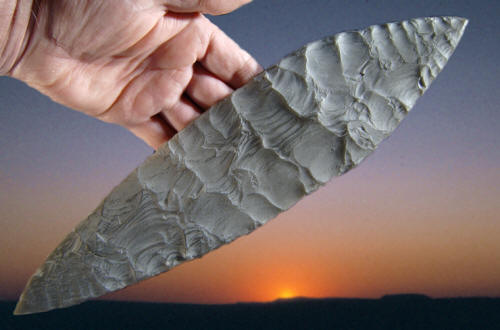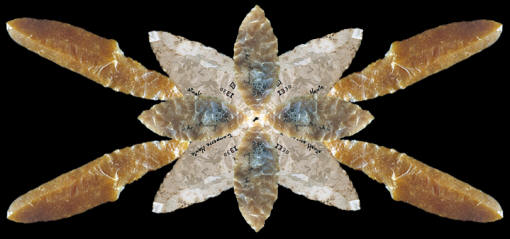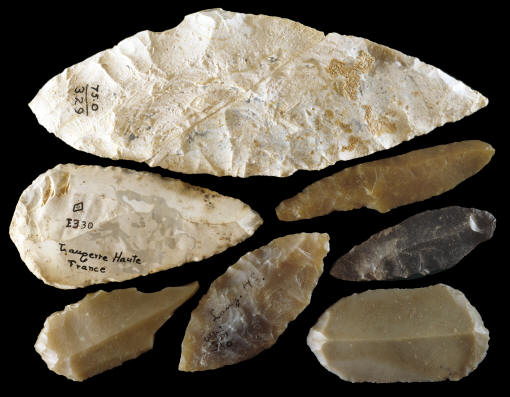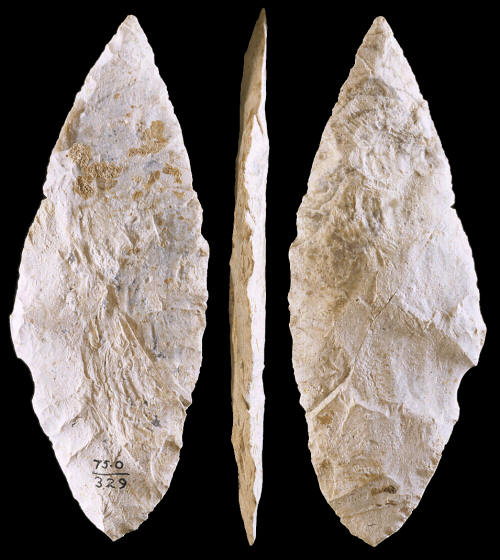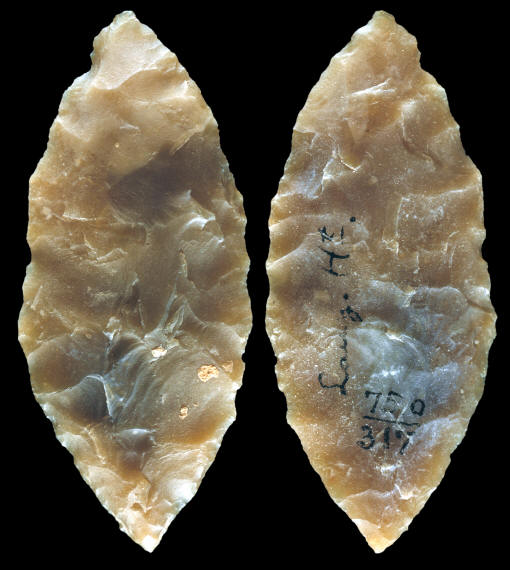|
||
|
||
|
"The French Solutrean has left us the
most spectacular examples of Paleolithic stone chipping, notably
the most unbelievably delicate and handsome Solutrean Laurel-Leaves."---1970, Jacques
Bordaz, "Tools of the Old and New Stone Age," p. 76.
The Solutrean industrial complex appears in western Europe approximately 21,000 years ago. The Solutrean period also brings with it several new and innovative technologies. One of the most important developments during this period involves lithic technology with the production of very skillfully crafted stone tools. These events occur within the last major division of the Old World Paleolithic called the Upper Paleolithic which dates from 40,000 to 10,000 years ago. The Neanderthals disappear during this time and the basic ideals of what we believe it is to be a modern human are established. It's a time when ghosts and spirits appear to connect with concepts of an afterlife and art in the form of paintings, engravings and three dimensional sculptures appear. |
||
|
Although the most important Solutrean site is Laugerie Haute the type site for the Solutrean complex is located at Solutre in eastern France. In 1921 R. A. S. Macalister writes, "Close to the village of Solutre near Macon (Saone-et-Loire), there rises a prominent cliff, called the Rock of Solutre, in the shelter of which was established one of the most important Paleolithic stations of all Europe." The actual site is in field. The excavation there began in 1866 and continued at intervals for many years. If it hadn't been for another site named Laugerie Basse a short distance away from Laugerie Haute, Gabriel de Mortillet would have named Laugerie Haute the Solutrean type site. |
||
|
The Solutrean is one of several different sub-periods within the Upper Paleolithic Period. The Perigordian is first and includes Chatelperron and Gravettian. The Aurignacian is a more recent Early Upper Paleolithic complex that dates from 34,000 to 29,000 years ago. The Aurignacian is recognized as the first complex in Europe that is definitely associated with modern humans plus they also establish core and blade technology. The Solutrean complex appears between the Aurignacian and the Magdalenian periods. The Solutrean continues for about three thousand years between 21,000 and 18,000 years ago. The Magdalenian period is last and dates from 17,000 to 11,500 years ago. |
||
|
The climate during the Upper Paleolithic period in western Europe was generally cold. The Solutrean culture occupied western Europe well south of Paris during the last glacial maximum at a time when northwestern and central Europe were apparently abandoned. The Solutrean people who were living in western Europe at this time were well adapted to a rigorous cold environment. But the Solutrean was short lived, lasting only about 3,000 years. |
||
| CONTINUE ON TO PAGE TWO | ||
|
"REFERENCES"
1921, Macalister, R.
A. S., "A Text-Book Of European Archaeology," Vol. I, p. 371-373. |
||
